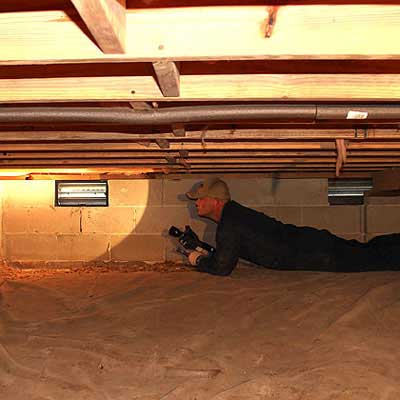Research has shown that you or someone you know has had a personal experience with termites and the damage they cause. That’s one in two homes or businesses in the United States. In fact, research has shown that southeast has some of the highest termite populations than anywhere else in the country.
The destructive nature of Subterranean Termites equates to billions of dollars annually in damage and repair costs. Since most homeowner’s insurance doesn’t cover termite damage, you are correct to be concerned and proactive in your efforts to keep termites away from your home or building.

At Curry’s Termite & Pest Control we’ve provided over 90 years of experience in protecting your most important investments by keeping these destructive pests in check and out of your home or business. Our professionals receive on going training in product methodology, application techniques, preventative measures and home const
Most common in Arkansas, subterranean termites live in the soil and continuously hunt for food and water. If they encounter your home’s foundation while foraging, they’ll follow any crack, crevice or plumbing line into your house. They only need an opening 1/32 inch wide to enter and begin their slow destruction.
Termites may enter through wood in direct contact with soil or by building pencil sized mud tunnels from the ground level to where your home’s wood frame begins. Curry’s trained professionals know where to look and what to look for when identifying a potentially damaging termite infestation.
SIGNS YOUR HOME MAY HAVE A TERMITE PROBLEM
The first step, of course, is finding out if you have a problem. Here’s what to look for:
- Swarming: Swarms are what tip most homeowners off to an infestation and may the most visible indicator that you may have a termite problem. Swarms usually happen in the spring or after a period of rain, when some of the termites take flight from the colony in an effort to establish a new colony. A homeowner with a termite problem will often find their bodies or wings, 1/4-1/2 inches long, lying on sashes and below windows where the termites have tried to exit.
- Shelter Tubes: Subterranean termites need moisture to live, and they need the protection of tiny spaces. They build pencil-thick tunnels of mud and earth across bare concrete or masonry between the soil and any wooden part of your building. These shelter tubes could be abandoned. To see if these tubes are active, break one off and see if it is rebuilt.
- Visual Inspection: Simply pull back mulch around suspicious areas of the house or rotting wood near the house and look for live termites. Termite workers are pale, soft-bodied insects about 1/4 inch or less in length. They appear to have a head and body because their thorax is broadly joined to their abdomen. Their antennae are straight, just like a string of beads. Winged termites (swarmers) have pigmented bodies with broad waists and two pair of wings that are equal in size and shape. Subterranean termite swarmers also have bodies about 1/4 inch in length with wings extending about twice the length of their bodies.
- Hollowed Wood: Probe suspect wood with a knife or flat-blade screwdriver to see if it’s been hollowed. Severely damaged wood may sound hollow when tapped.
- Dirt In Wood: It’s easy to get confused about what is water damage and what is termite damage, since water and termites are often related. The best way to differentiate termite damage from moisture damage is that termites bring bits of dirt up into the wood. Probing termite damaged wood will reveal dirt in the hollowed area where they’ve fed.
If you find any sign of termites it’s best to leave treatment to the professional. Termite prevention is the key to protecting your property and providing you with peace of mind. For a free pest or termite quote contact Curry’s today.
